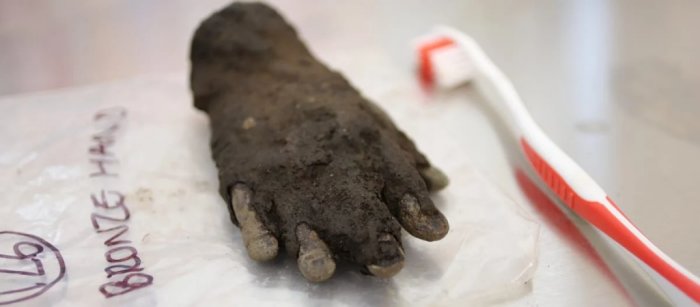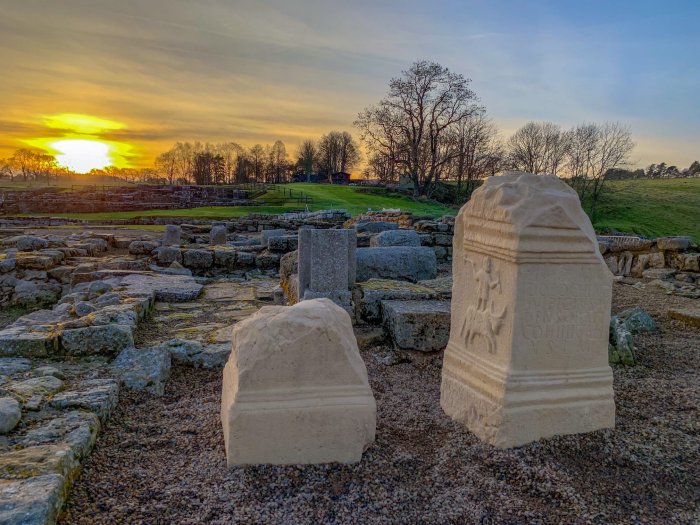Jan Bartek – AncientPages.com – The fort of Vindolanda, one of the earliest Roman garrisons, built by the Roman army in England, is one of Europe’s most important Roman archeological sites. It guarded the Stanegate, the Roman road from the River Tyne to the Solway Firth. It was situated behind Hadrian’s Wall, near the modern village of Bardon Mill in Northumberland, England.
Archaeologists have excavated at Vindolanda for many years, resulting in remarkable discoveries. Scientists have found anything from skeletons, weapons, and ruins to toys and letters. Vindolanda is a window to the ancient Roman presence in northern England.

Credit: Vindolanda Charitable Trust
While excavating at the Vindolanda site, archaeologists found a remarkable artifact in the top layers of the northern Severan ditch fill, some 1.5 meters below the modern-day ground level.
A small, child-sized, and eerily life-like bronze hand had been discarded in the ditch. Close inspection of the artifact after conservation at Vindolanda revealed that the 10cm hand originally had an attachment, now missing, inserted into the palm.
The hand is very well crafted, especially on the palm-facing side, indicating its purpose was to profile the object it once held. The base of the hand is socketed and would have been originally fixed to a pole.
The hand was uncovered some meters beyond a temple dedicated to Jupiter Dolichenus, tucked into the northern wall of the third-century fort at Vindolanda, which was excavated in 2009. It is now apparent that the newly discovered hand most likely served a cult function and may have been closely ᴀssociated with Jupiter Dolichenus, a god and mystery cult that was widespread in the Roman Empire from the early 2nd to mid-3rd centuries AD.
Comparable examples of votive hands have been found at or close to other temples of Jupiter Dolichenus. However, most are slightly larger than the Vindolanda example, and some are fortunate to still have inscriptions referring to the god.
Jupiter Dolichenus is depicted holding a thunderbolt in his hand with an upraised arm signifying his destructive power. The open votive hand symbolizes the protection and well-being that he could also bring.

Credit: Vindolanda Charitable Trust
It is a rare and beautiful artifact, Dr Andrew Birley, CEO and Director of Excavations at the Vindolanda Trust said.
“When we excavated the nearby temple to Dolichenus in 2009, it was clear that the temple treasures had been removed in Roman times. However, this find being made in a nearby area reminds us that the life of the temple and the practices ᴀssociated with the worship of Dolichenus had clearly stretched beyond the confines of its stone walls.”
See also: More Archaeology News
The cult of Jupiter Dolichenus is shrouded in mystery as very little evidence has survived of its myths, liturgies, or rituals. All that is known about the religion is based on surviving inscriptions, sculptures, or other prices of decorative art from different parts of the Roman Empire. We hope that the continued archaeological investigation of the site at Vindolanda may help to shed more light on the religious practice of Dolichenus in this period of history,” Dr. Birley said.
Written by – Jan Bartek – AncientPages.com Staff Writer





